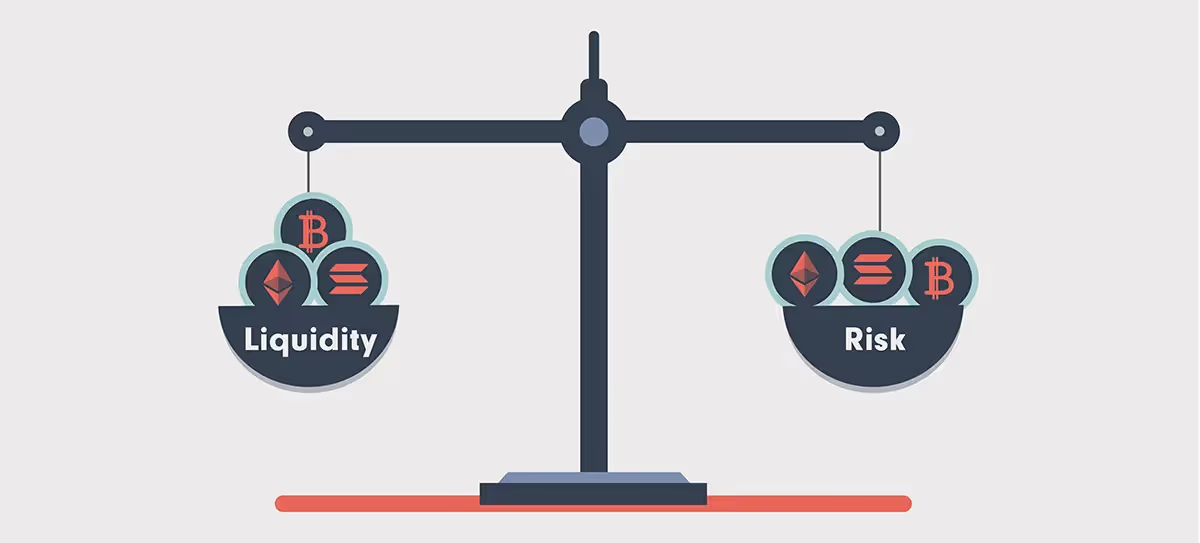
Digital asset custody for enterprise business
The growing number of crypto payment gateway providers means that anyone from a small business to a multinational company like Amazon can now accept crypto payments for goods and services.
But beyond taking payments, how can enterprise-level companies safely store their cryptocurrency assets? This article will address some of the key considerations for digital asset custody in enterprise business.
We’ll cover the three broad categories: crypto exchanges, self-custody and third-party custodians.
Crypto exchanges
First, there is exchange custody. This includes services such as Coinbase, Robinhood, and Paypal.
When a party purchases crypto from a centralized exchange, the custody of the crypto remains with the exchange until the customer withdraws or spends the funds. Many retail consumers who use these services never actually take custody of their crypto assets.
The upside of having crypto held on an exchange is liquidity, meaning the funds can quickly be deployed, sold, or transferred.

The problem with using exchanges for digital asset custody is that they can be hacked, or they can be shut down by authorities and go bankrupt.
One of the most high-profile incidents was in 2011 when the Mt Gox exchange was hacked and bitcoin worth $8.75m was stolen. More recent examples include the hacking of the Binance exchange in 2019.
Self-custody
Many exchanges allow customers to transfer their funds to their own crypto wallets for self-custody.
The upside of self-custody is that, when used properly, crypto wallets are generally more secure than exchanges.
However, great care must be taken to assure that the private key to a wallet remains secret.
If a nefarious party were to find the key, they could quickly and easily empty the wallet. And there’s nothing the previous owner can do to recover the funds.
Enterprise wallets with multiple users have more complex security arrangements than those used by individuals or small businesses, but the same underlying principles apply. The benefits of self-custody must be carefully weighed against the risks and responsibilities.
Corporations with a high volume of transactions may find that a bespoke or custom solution works better than an out-of-the box enterprise wallet when it comes to digital asset custody.
Third-party custodians
Large enterprises such as institutional investors and hedge funds have more complicated requirements for digital asset custody.
These big players (sometimes referred to as “whales” in the crypto world) need a robust security solution that involves more than just a login and password to access the funds.
Because of the complexities of crypto, institutional investors turn to what are known as crypto custodians. For a fee, custodian services will hold and safeguard the client’s crypto funds.
In order to be useful to a crypto whale, custodians must offer measures such as top-level cybersecurity and tiered levels of authorization.
Oftentimes custody services will use a combination of “hot” and “cold” wallets.

A hot wallet is usually software-based and runs on a computer or mobile device that is connected to the internet.
Hot wallets provide a high level of liquidity. However, being connected to the internet means they carry a risk of being hacked.
A cold storage wallet is a hardware device that is not connected to the internet. Cold wallets store a user’s private keys, which are used to “sign” transactions, offline. They are less convenient than hot wallets but much more secure.
Even if a hardware wallet is stolen, the thief would also need the login credentials such as a password and biometrics in order to gain access to the wallet’s funds.
Extra security measures
Because a single key is prone to theft, crypto custodians often utilize additional security steps such as multi-signature wallets.
A multi-signature wallet requires two or more parties to sign off on a transaction before it can take place. This distributes the trust and assures that no one person at the custodian service has access to the funds.
Crypto custodians invariably go to extreme lengths to employ strict security measures to protect private keys such as storing them in separate vaults so that they can’t be stolen.
Licensed custodians offer additional security to clients through trusted insurers. Insurance gives clients recourse in the event of a security breach and increases trust in the custody provider.
Choosing a crypto custodian
According to Deloitte (PDF), institutional investors should consider the following questions when vetting potential crypto custodians:
● The security provisions used by the custodian
● The processes in place for key generation, storage, and access
● Authentication and transaction safeguards employed by the custodian
● Recourse in the event of loss or theft of the asset.
Another factor to consider is the value of assets in custody. Also of high importance is how well the custodian integrates with existing financial systems (more on this below).
Beyond custody: crypto treasury management
As more and more institutional investors and hedge funds enter the ring, crypto will really start to shake up financial institutions. With so much at stake, global demand for digital asset custody services is growing exponentially.
But in addition to securely holding cryptocurrencies as an investment asset, enterprise-level businesses may well need to incorporate crypto into their day-to-day treasury operations. This could be for the purposes of paying employees in Bitcoin, to give one example.
Treasury management for crypto assets is a specialty field, and providers need to offer flexible and scalable digital asset custody solutions, especially for companies entering the crypto ecosystem for the first time.
When it comes to crypto treasury management, companies like Fortris offer enterprises a seamless way to integrate digital assets without having to replace their existing workflows.
Fortris handles digital asset treasury operations for enterprise business.
Want to learn more? Book a demo today.
Fortris handles digital asset treasury operations for enterprise business.
Want to learn more? Book a demo today.
